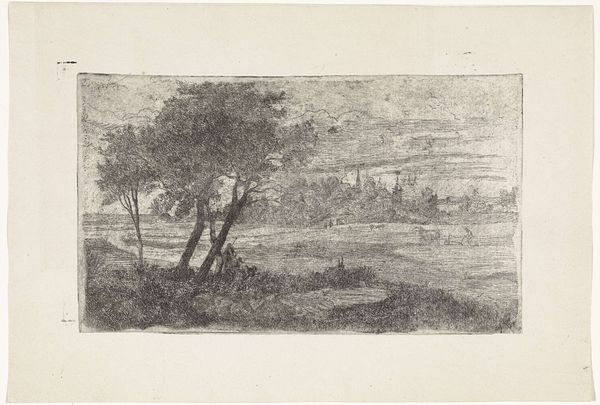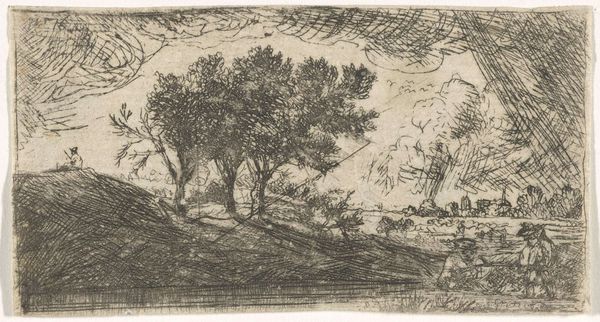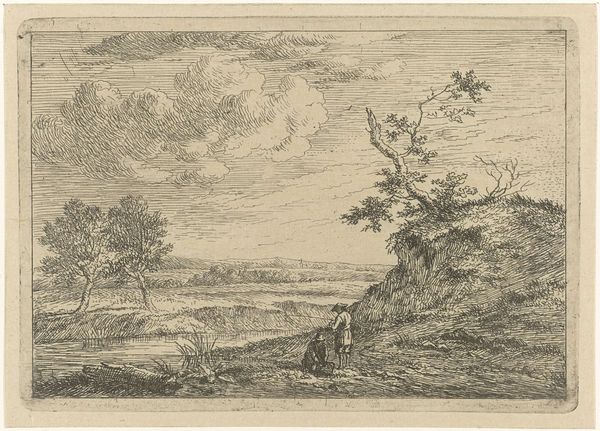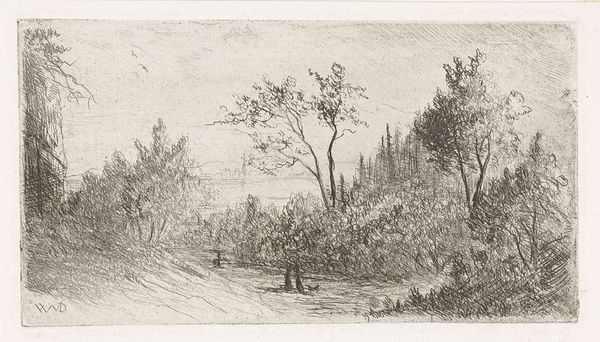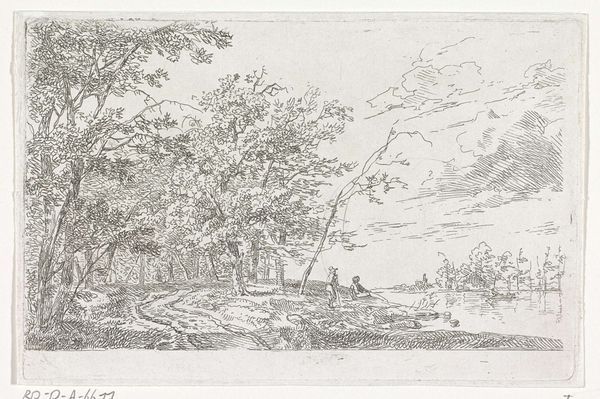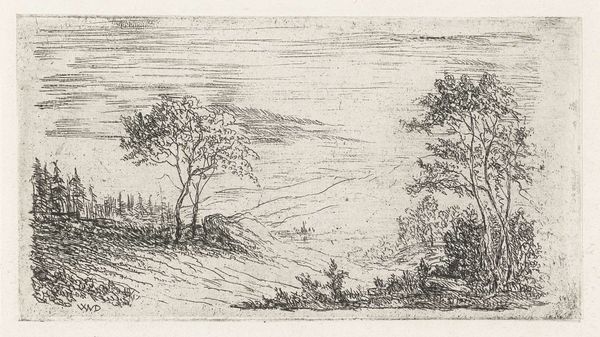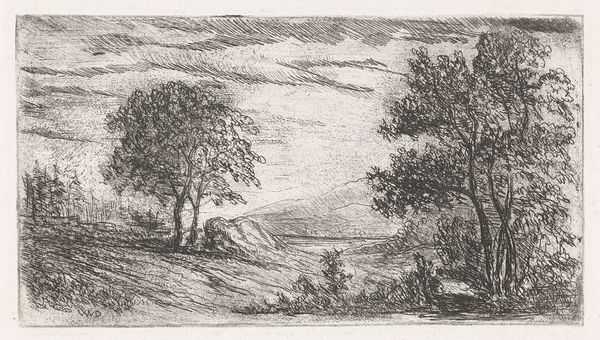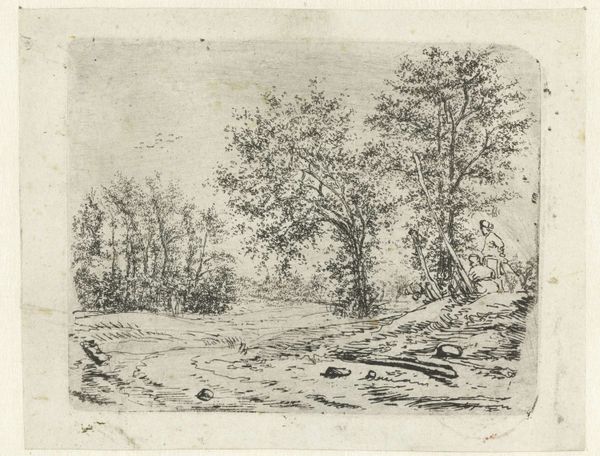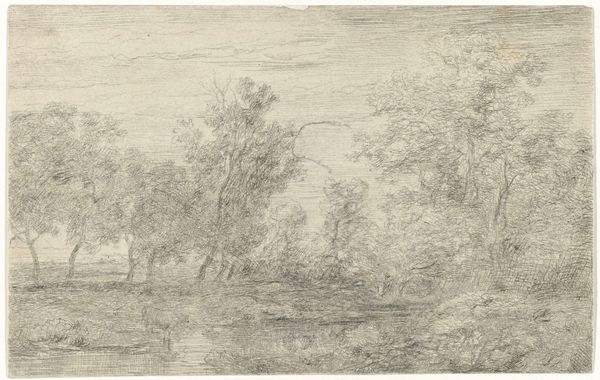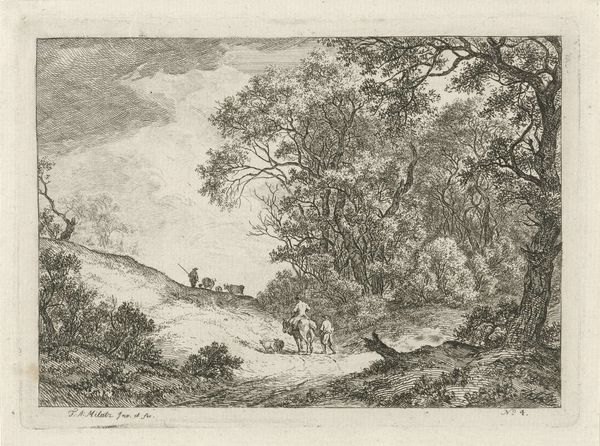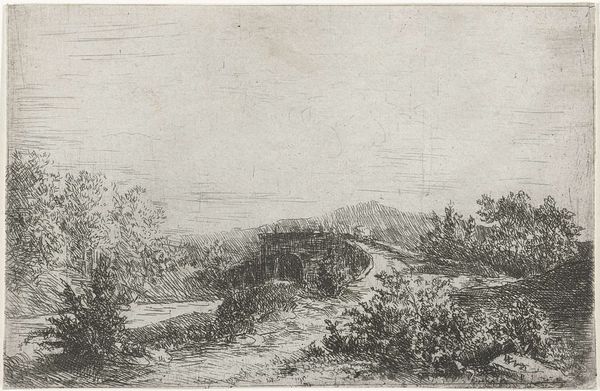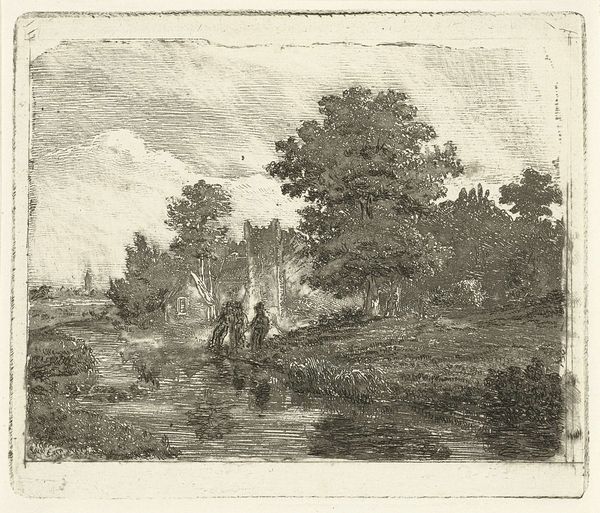
etching
#
dutch-golden-age
#
etching
#
landscape
#
etching
#
realism
Dimensions: height 158 mm, width 217 mm
Copyright: Rijks Museum: Open Domain
Jacob van Ruisdael created this etching of a landscape with a farm, a scene rendered in shades of grey, sometime around 1646. It is a seemingly simple scene, but it reveals much about the cultural moment in which it was made. The Dutch Republic in the 17th century was undergoing a period of unprecedented economic growth and social change. The rise of a wealthy merchant class led to new patterns of art patronage, outside of the traditional church and aristocracy. Artists responded to this new market by creating images that reflected the values and interests of this emerging social group. Landscape painting became a popular genre, celebrating the beauty and prosperity of the Dutch countryside, subtly reinforcing a sense of national identity. Through printmaking, images like this became available to a wider public. The artist was no longer simply a craftsman, but a cultural figure, an intellectual whose work had broad social significance. By studying archival records and other historical documents, we can gain a deeper understanding of the complex social and institutional forces that shaped the art of the Dutch Golden Age.
Comments
No comments
Be the first to comment and join the conversation on the ultimate creative platform.
